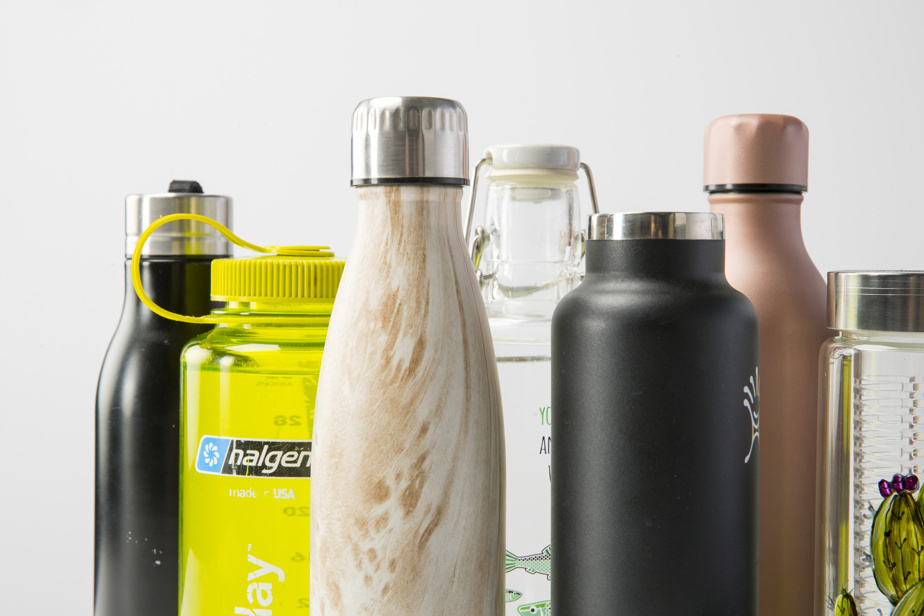When should I wash my bottle?
“The recommendation is to wash it at least once a day, and not just rinse it,” says Marc Hamilton, president of the Association of Microbiologists of Quebec (AMQ). So we use soap, water and a brush to thoroughly scrub all parts of the bottle: the neck, the seals, the straw, everything!
The dishwasher is also an excellent option, says the microbiologist. “We think that our bottle, because we just put water in it, there is no problem, but it is not sterile water nor a sterile bottle. » You need to be extra vigilant (and clean) when putting a sugary drink in your bottle. “You are giving a terrible cocktail to bacteria,” explains Marc Hamilton. The same goes for coffee with milk that you put in a reusable cup: you create a favorable environment for bacteria.
We can’t reach certain corners? You can soak all the parts in your bottle overnight in a container filled with half water and half vinegar, or with water and a teaspoon of bleach. Then rinse the bottle well to remove all traces of bleach or vinegar.
If you notice that mold has proliferated, try to dislodge it by rubbing it with a mixture of water and a little bleach. The bottle may then be altered or discolored, but we can continue to use it if the mold is gone, explains the president of the AMQ. And don’t forget to rinse well with water after rubbing it with this mixture.
Does it really matter if I don’t wash my bottle often?
For the president of the AMQ, it is essentially a question of hygiene. On the other hand, if you don’t clean your bottle often, “we always increase the risk of being in the presence of micro-organisms which could give us side effects”, he warns.
The mold that appears in water bottles doesn’t worry him too much. “The advantage is that before they cause side effects, we will see them with their reddish or greenish color and an odor will be created. » On the other hand, a yeast infection of the mouth and intestinal disorders could occur.
“Bacteria are more sneaky,” he says. In a 2018 study, Brazilian researchers analyzed the inside of water bottles, and 83% of them were contaminated with bacteria, mostly staphylococci and E.coliwhich are “potentially pathogenic”, explains Marc Hamilton.
These bacteria can be found on hands and eventually enter the bottle when handled. “We open it with our hands, touch the cap, fill it, close it, put it in our mouth. It doesn’t take much, explains the microbiologist. We just need a colony ofE.coli and the water is already undrinkable. »
The consequences are more than unpleasant: “severe symptoms of food poisoning, fever, gastric problems, diarrhea and, if I go further, kidney failure,” lists the president of the AMQ.
When should I change my water bottle?
According to research, a plastic water bottle lasts on average one year, and stainless steel ones, three years, explains Marc Hamilton. This is about the time the inside of the bottle starts to show scratches and dents. “This is conducive for bacteria to be able to cling to it and create a biofilm easily. »
But it’s all a question of discernment. For ecological reasons, we often keep our bottles for many years, so we should make sure to clean them each time they are used, and perhaps change them when signs of wear are present.
Learn more
-
- 300,000
- This is the average number of colony-forming bacteria per square centimeter found in reusable water bottles after one week without cleaning.
Source: analysis by EmLab P & K (2017)
